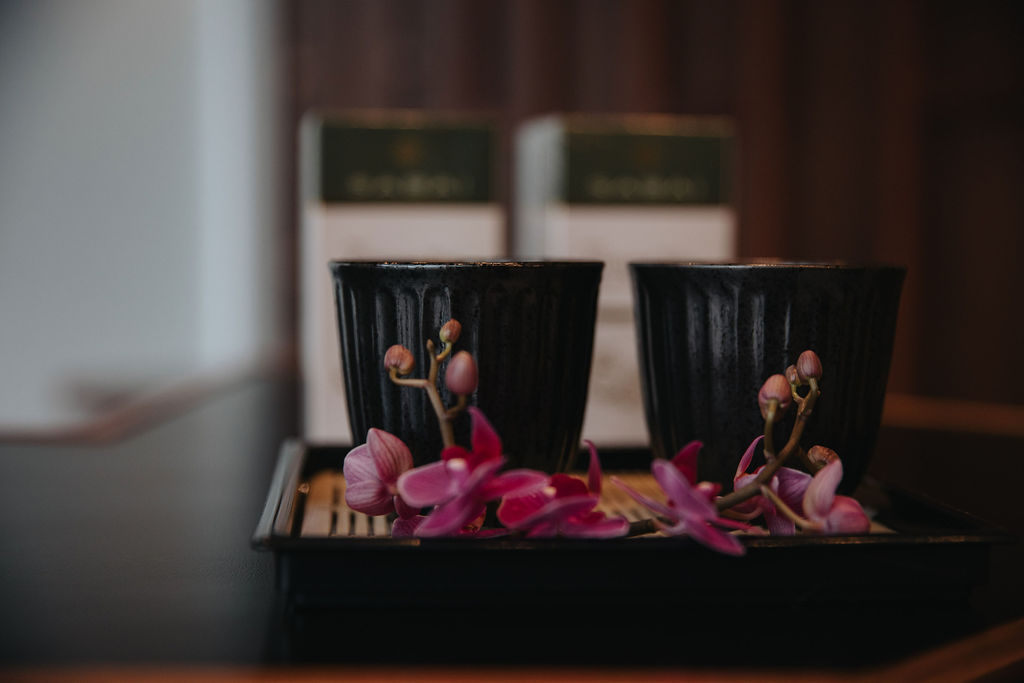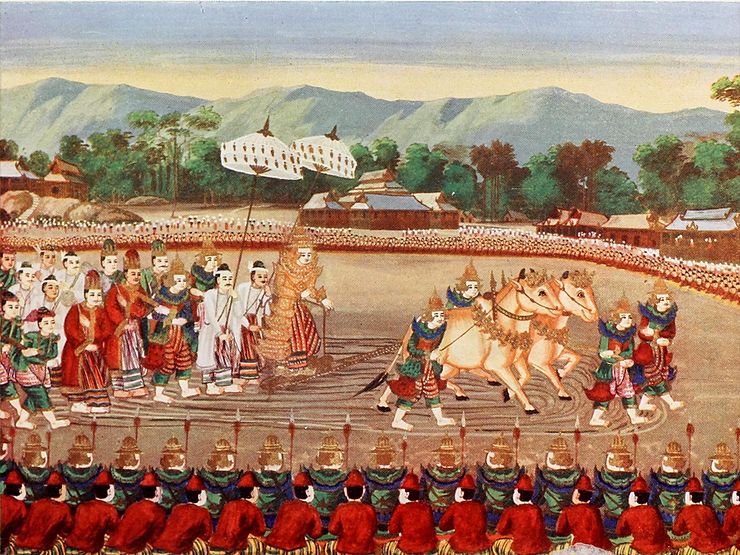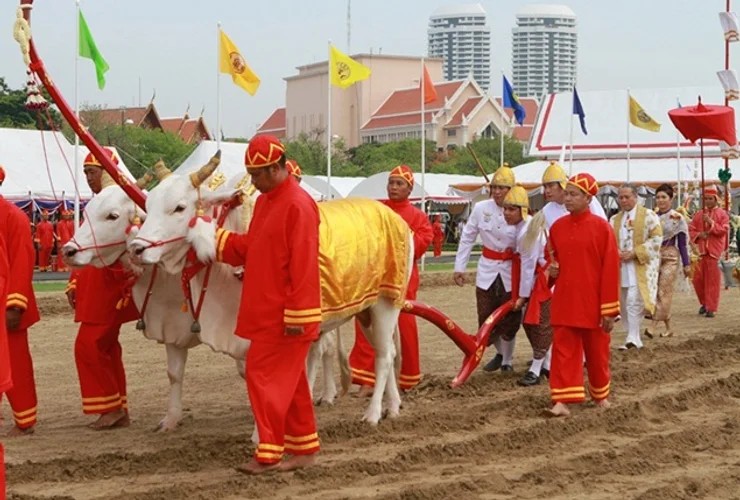The Ploughing Ceremony marks the start of the season when paddy land is prepared for rice cultivation. It signals to farmers that the time has come to work their fields and encourages them to try harder. This ceremony has customarily been performed in almost all countries of Southeast Asia. In monarchies, by tradition the ruler presides over the ceremonial proceedings.
During the Ayutthaya Period in Thai history, this ancient ceremony had been incorporated into the Palace Laws and became known as Charot Phra Nangkhan Raek Na Khwan, or the First Ploughing Ceremony, which formerly was performed exclusively as a Brahmin ritual. In the reign of King Rama IV (1851-1868), the Buddhist ritual was added, known as Phuet Mongkhon Ceremony, to bless plant matter and rice seed used in the ploughing process. It had been held at the Phra Ubosot of Wat Phra Si Rattana Satsadaram, on the day before the First Ploughing Ceremony. In more recent times of Thailand’s history, the ceremony of Phuet MongkhonCharot Phra Nangkhan Raek Na Khwan had been performed yearly, until it ceased in the year 1936. By royal command of H. M. King Bhumibol Adulyadej, this ancient Thai tradition was revived in the year 1960. It has been held annually, to this date.
In history, this ceremony was held on an auspicious day determined by a royal astrologer, sometime in the month of May, to mark the beginning of the rice-planting season in Thailand. At present, this ceremony is performed in two parts.
To start the ritual proceedings, the Royal Phuet Mongkhon Ceremony is performed in the Royal Chapel at Wat Phra Si Rattana Satsadaram. Rice seed, plant matter and agricultural implements to be used in the ploughing ceremony are blessed through religious rites presided over by the King.
In the morning of the following day, the Royal Ploughing Ceremony proper is carried out in traditional style at Sanam Luang, on the open ground in the heart of the city of Bangkok. Beforehand, the ceremonial site is prepared by having furrows dug into the ground for the ritual ploughing.
A high-ranking government official in charge of agriculture is appointed to perform the role of the Lord of the Harvest, with four unmarried women officials of the Ministry of Agriculture and Cooperatives as his assistants. These Celestial Maidens, as they are known, carry the seeds in baskets suspended from slender yokes resting on their shoulders while circumambulating across the symbolic field, behind a pair of oxen / bullocks drawing the plough, directed by the ploughman. Thereupon, the Lord of the Harvest selects one of three pieces of scarlet cloth of varying lengths. His choice predicts the amount of rainfall for the incoming agricultural year. Then, the seeds blessed earlier by the King are broadcast into the furrows, from where they are later gathered by farmers who regard them as auspicious and keep them to mix with seed to be used in cultivating their own fields.
The ploughing ceremony is completed by leading the draft animals to troughs containing fodder and liquids, including paddy, corn, legumes, sesame, grass and water as well as liquor. The animals’ first choices of fodder and liquids serve as means to predict the harvest of the
forthcoming season.
Upon conclusion of the ceremony at Sanam Luang, some of the rice seed broadcast onto the ceremonial site is taken to the experimental rice growing station on the palace ground of Chitralada Villa, the royal residence, to be planted for the production of seed that will be required for next year’s ceremony.
The Royal Ploughing Ceremony, deemed a vital event by Thai farmers for their agricultural fortune, signifies one of the prominent traditional features of Thailand’s cultural identity.




